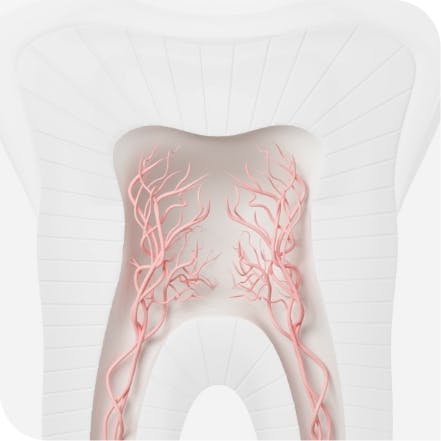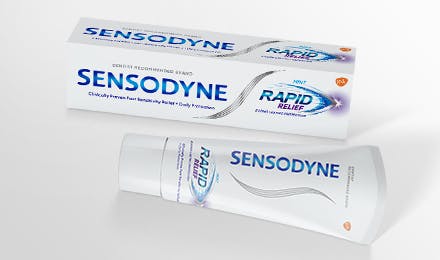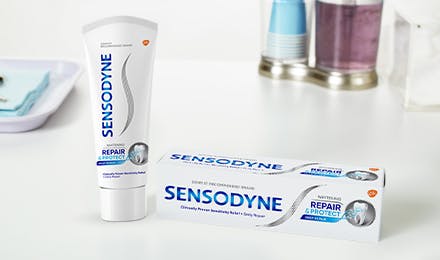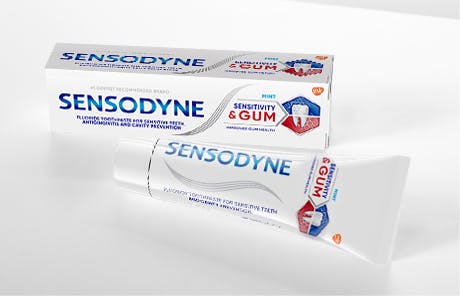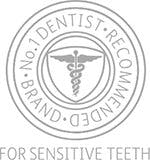What’s in Toothpaste?
Ever wonder what ingredients are in toothpaste? Find the right toothpaste for you by learning about some common ingredients and what they do.
It’s a product you use every day, but have you paused to consider what’s in your toothpaste, and how those ingredients work together to keep your teeth clean, healthy and looking great?
Most toothpastes contain a mixture of active and inactive ingredients. Active ingredients can fight cavities and gum disease, for example, and also generally support your oral health, while the inactive ingredients contribute to the taste, texture or cosmetic benefits of the toothpaste – as we’ll see below.1
By learning about some of the most common ingredients used in toothpastes and what each one does, you can get a better sense of which product will best suit your dental care needs. Read on to find out what all those terms on the label mean…
Fluoride
This is probably the one toothpaste ingredient that everyone has heard of. Fluoride is a mineral that strengthens tooth enamel to protect against cavities and acid erosion.1 Like all American Dental Association-approved toothpastes,1 all Sensodyne products contain fluoride (stannous fluoride or sodium fluoride) to ensure your teeth get cavity protection.
Abrasives
To make sure your teeth get a good (but gentle) scrub, toothpastes contain mild abrasives. These grainy substances work with your toothbrush to buff off stains and surface debris and give your teeth that shiny, clean feeling. Commonly-used abrasives include silica gels, calcium carbonate, hydrated silica, phosphate salts, magnesium carbonate and hydrated aluminum oxides.1
Sodium Lauryl Sulfate
The bubbly foam you get when you brush your teeth is caused by detergents in the toothpaste, the most common being sodium lauryl sulfate (SLS).1 While sodium lauryl sulfate does help loosen plaque and dirt from tooth surfaces, it can sometimes irritate oral tissues.2 If you find this is the case, try a SLS-free toothpaste.
Humectants
Humectants are added to toothpaste to keep the product moist and smooth and prevent it from drying out when it’s exposed to air. Some of the most common humectants are glycerin, glycerol and sorbitol.1
Potassium Nitrate
This active ingredient is used in toothpastes for sensitive teeth. It helps relieve the twinges of pain that come when your teeth are exposed to hot or cold substances by soothing the nerves and blocking pain signals.1
Stannous Fluoride
Another effective active ingredient in sensitive teeth toothpastes, stannous fluoride forms an insulating layer over sections of the teeth where the inner dentin has become exposed.1 This helps prevent triggers such as hot, cold or sweet foods from reaching the tooth’s nerves, thereby providing relief for sensitive teeth.
Flavorings
No one wants their toothpaste to taste awful, so sweeteners and other substances are usually added to give it a pleasant flavor. Xylitol, aspartame and saccharin are common sugar-free sweeteners that make toothpaste taste good without contributing to tooth decay.1 Some toothpastes also include ingredients such as spearmint, cinnamon, peppermint, menthol or wintergreen to give a fresh flavor.3
Binding Agents
These thickening ingredients give toothpaste its creamy texture. Cellulose and xantham gum are common binding agents you’ll see on toothpaste ingredient lists.1
Baking Soda
Also called sodium bicarbonate, you’ll sometimes see baking soda added to toothpaste. Its abrasive qualities have been shown to be effective at removing plaque and surface stains.5
Hydrogen Peroxide
Hydrogen peroxide is a popular bleaching agent that is often added to whitening toothpastes to give a brighter smile.1 It is effective in changing the color of your enamel to make teeth look whiter, but it can also temporarily result in increased tooth sensitivity.4 Thus, if you’re prone to sensitive teeth, you may want to consider a gentler whitening toothpaste.
Now that you have a better idea of what the ingredients in your toothpaste are and what they do, you’ll be better equipped to pick out the right toothpaste for your needs. Remember, though, always consult with your dentist if you are experiencing pain or other issues with your teeth – they can determine the cause and work out the best plan of treatment to keep your teeth healthy.
Sources:
1. Toothpastes. American Dental Association. https://www.ada.org/en/member-center/oral-health-topics/toothpastes. Accessed 12/12/19.
2. Taking a Bite Out of Oral Health. University of California San Diego Health. https://health.ucsd.edu/news/features/Pages/2019-07-08-otc-oral-health.aspx. Accessed 12/12/19.
3. Dental Health Foundation Ireland. What is Toothpaste. https://www.dentalhealth.ie/adult-oral-health/oral-health-care-products1/what-is-toothpaste/. Accessed April 16, 2019.
4. Whitening. American Dental Association. https://www.ada.org/en/member-center/oral-health-topics/whitening. Accessed 15/10/20.
5. NCBI. Enhancement of plaque removal efficacy by tooth brushing with baking soda dentifrices: results of five clinical studies. https://www.ncbi.nlm.nih.gov/pubmed/19278079. Accessed April 16, 2019.
6. Baking soda dentifrices and oral health. Journal of the American Dental Association. https://jada.ada.org/article/S0002-8177(17)30822-X/pdf. Accesed 12/12/19.
7. The Effectiveness of a Calcium Sodium Phosphosilicate Desensitizer in Reducing Cervical Dentin Hypersensitivity. Journal of the American Dental Association. https://jada.ada.org/article/S0002-8177(14)60324-X/abstract. Accessed 12/12/19.
